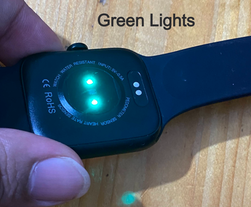How smartwatch sense and measure heart rate!!
- Subir Biswas

- Dec 25, 2020
- 2 min read
Updated: Nov 14, 2021
What is a Pulse beat or Heart rate sensor?
A pulse wave is a change in the volume of a blood vessel that occurs when the heart pumps blood, and a detector that monitors this volume change is called a pulse sensor. There are four main ways to measure heart rate or pulse beats:
Electrocardiogram: A method of measuring the electrical pulses generated during each cardiac cycle in the body.
Photoelectric pulse wave: A method measure the light Pulse Wave Measurement
Blood pressure measurement: This method measures changes in vascular pressure during heart contractions.
Phonocardiography: A method of measuring sounds generated during heart contractions.

Pulse sensors used in smartwatches use the photoelectric method.
Pulse sensors using the photoelectric pulse wave method are classified into two different types depending on the measurement method.
Transmission Type Pulse Sensor
Transmission types measure pulse waves by emitting red or infrared light from the body surface and detecting the change in blood flow during heartbeats as a change in the amount of light transmitted through the body. This method is limited to areas where light can easily penetrate, such as the fingertip or earlobe. Generally used in medical industries.

Reflection-Type Pulse Sensor
The Reflection-type pulse sensors or Optical Sensors for Heart Rate Monitor) emit infrared, red, or green light (~550nm) towards the body and measure the amount of light reflected using a photodiode or phototransistor. Oxygenated hemoglobin present in the blood of the arteries has the characteristic of absorbing incident light, so by sensing the blood flow rate (change in blood vessel volume) that changes following heart contractions over time we are able to measure the pulse wave signal. This pulse wave will be connected to a suitable controller that performs all the algorithms and shows them on the display. This kind of sensor used in all wearable devices, smartwatches, fitness trackers, etc.

A very important point to note during LED selection.
Since reflected light is measured, the range of suitable areas is not limited as with transmission-type pulse sensors. Pulse wave measurement using red or infrared light can be affected by infrared rays contained in sunlight (i.e. outdoors), preventing stable operation. For this reason, usage indoors or semi-indoors is recommended.
For pulse wave measurement outdoors (i.e. by smartwatches, fitness trackers), a green light source that has a high absorption rate in hemoglobin and less susceptibility to ambient light is used.

Another application of Pulse Sensor or Optical Sensor for Heart Rate Monitor
Generally, by looking at the period of fluctuation from the waveform obtained by measurements of the pulse wave sensor and observing the pulsation (variation) using the heart rate along with both red and infrared waves, it is possible to measure the arterial blood oxygen saturation (SpO2). I will cover this in another article in detail.
In addition, using data from pulse sensors is expected to enable the calculation of various vital signs such as HRV analysis (stress level) and vascular age through high-speed sampling and high accuracy measurement.



























Comments